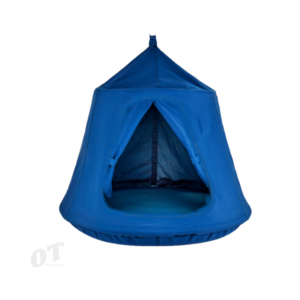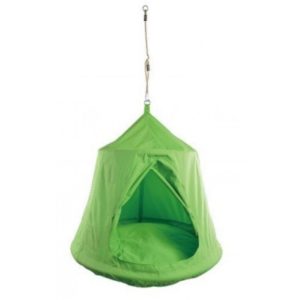Sensory Swing: How to Use Them to Help Your Child With Sensory Processing Disorder
Sensory swings are a great way to help your child with sensory processing disorder (SPD) syndrome. They provide vestibular input, which can help calm and focus your child. They can also be a great way to get your child moving
What are the key features of Special needs Swings?
There are a few key features that make Sensory Swings a great choice for those seeking a fun and stimulating way to engage the senses. First, the swings come in a variety of colors and textures that are visually stimulating and can help promote focus and concentration. The different textures also provide a tactile experience that can help soothe and calm the body. Additionally, the swings are designed to be used in a variety of positions, which can help target different areas of the body for sensory input.
How do Sensory Swinging help children with sensory processing disorders?
Sensory-friendly swings help children with sensory processing disorders by providing them with a safe and controlled environment in which they can explore and play. The swings help to stimulate the child's senses and provide a calming and soothing effect. The swings can be used to help the child develop a better understanding of their body and how it moves through space. The swings can also help the child to develop a better sense of balance and coordination.
When you see kids on the spectrum or with asperger's showing meltdowns, shutdowns, or tantrums, they need self-regulation to get their behavior stable.
What are the benefits of using therapy Swings?
There are many benefits of using Sensory toys for both children and adults. Sensory Swings can provide vestibular input, proprioceptive input, and deep pressure input, which can help to calm and focus the body and mind. Vestibular input helps to regulate the nervous system and can be especially helpful for those with a sensory processing disorder, autism, ADHD, sensory-seeking, and anxiety issues. Proprioceptive input helps to improve body awareness and can help to improve coordination and balance.
Facts:
1. Sensory swings are designed to provide a calming and stimulating environment for children with autism or sensory processing disorders.
2. They can be made from a variety of materials, including PVC pipe, nylon, and polyester.
3. mounting suspension can be hung from a ceiling, doorway frame, or playground equipment. Use the right hardware.
4. Sensory swings can be used for a variety of purposes, including vestibular stimulation, proprioceptive input, and deep pressure input.
5. They can be used by children of all ages, from infants to adults.
6. Sensory swings can be used for both indoor and outdoor play.
7. They can be used in therapy sessions, at home, or in the classroom.
8. Sensory swings can be used to help calm a child who is feeling anxious or overwhelmed.
9. They can also be used to help a child focus and attend to tasks.
How easy is it to set up and use hammocks Swings?
Assuming you are referring to the installation of a sensory swing in a home, it is a relatively easy process. The swing can be hung from a ceiling hook or mounted to a wall in the house. The most important information is to make sure the swing is installed securely and that the area around it is clear of any obstacles. Allow for movement of ropes with rocking activities.
Once the swing is installed, it is easy to use. Simply sit in the swing and enjoy the movement.
What are the different swing types available?
There are many different types of swings available, each with its own unique benefits. Some of the most popular types of swings include:
-Hammock swings: Hammock swings are a great way to relax and enjoy the outdoors. They are typically made from durable materials like nylon, lycra,, or canvas, and can support up to two people at a time.
Nest swings or web swings: Pod swings are a classic choice for adding a touch of charm to your home.
Disability swings are tailored for safety and comfort for the individual.
How long do Swing Sets last?
The duration of a sensory swing can vary greatly from individual to individual. Some people may only experience a few minutes of heightened senses before returning to their baseline level of sensory processing, while others may find that the effects of a sensory swing can last for several hours or even days. There is also a wide range in the intensity of sensory swings, with some people only experiencing a mild increase in sensitivity while others may find that their senses are significantly heightened.
How much do Safety Swings cost?
The cost of a sensory swing will vary depending on a number of factors, including the specific type of swing, the materials used, the size and weight capacity, and the retailer or manufacturer. However, as a general guide, sensory swings can range in price from around $50 to $200 or more.
Where can I find These Sensory Items?
There are a few places you can find sensory swings! One place is online at sites like OTwarehouse. You can also find them at some special needs stores or through catalogs. Finally, you can check with your local occupational therapy store or physical therapist to see if they know of any local resources in Australia.
Do you offer any guarantees or warranty for swing sets?
We offer a 100% satisfaction guarantee on all of our products. If you are not satisfied with your purchase, please contact us and we will do everything we can to make it right. We also offer a 1-year warranty on all of our products.




















